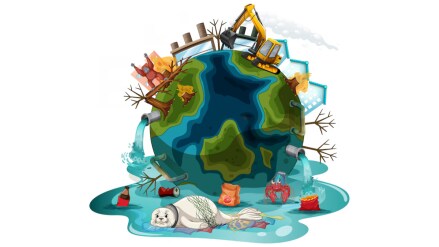By Ashish Dobhal
The Indian Meteorological Department’s prediction for a normal monsoon in 2024 will have come as a welcome respite for India’s farmers but the country’s farmlands will nevertheless have to adapt to overcome the persistent existential threat posed by climate change.
From heatwaves and unseasonal rainfall, to stressed resources, India’s agriculture sector increasingly finds itself at the mercy of extreme weather events.
These vagaries of the weather are already impacting yields. India’s rice output, for example, is set to record its first drop in eight years. Similarly, wheat stocks at the Food Corporation of India fell below 100 lakh tonnes for the first time since 2018. These falls in output are threatening food production at a time of unprecedented global demand.
With climate change becoming real, here to stay and set to get worse, farmers have no choice but to change the way they go about farming, so that they can grow more food with less, in conditions harsher than before.
They need to adopt the practice of precision agriculture. Precision agriculture is a calibrated approach to farming that harnesses smart technology to calculate the precise amount of inputs a crop needs.
The growing democratisation of new-age technology such as Artificial Intelligence, Machine Learning, satellite and drone technology and sensor-based Internet-of-Things, is making precision agriculture possible, offering a very viable and sustainable solution to the challenges the farm sector faces from climate change.
Precision agriculture empowers farmers with information. Satellite technology, for instance, can help them track shifting weather patterns in real time that can then help them plan their crop sowing schedule.
Farmers can, for example, delay the planting of rice in nurseries in the event of a late monsoon, so that the crop is ready to be transplanted into fields just as the rains arrive.
Drones, too, can scan for the start of a disease or pest outbreak, empowering farmers to nip the threat in the bud. Together with sensors, they can also help monitor soil health so farmers can plan appropriate nutritional interventions.
The amount of nutritional supplements, fertiliser, insecticides and water can be calculated to an unprecedentedly precise degree. Such an approach not only preserves soil health, extending the fertile, crop-yielding life of the soil, but also conserves resources.
This is especially crucial in the resource-stressed and water-stressed world we live in.
For example, India is currently caught in the grip of a crippling heatwave. Water levels at 150 major reservoirs in India were at 35 percent of their storage capacity, according to the Central Water Commission, as early in the summer as the first week of April.
How do we then give our crops the water they need without further depleting our reserves?
By using just as much water as is needed. Precision agriculture makes that possible.
In addition to the precision approach, there are other steps farmers can take to make farms more sustainable with fewer resources. They can switch to climate resilient varieties of crops. They can also turn to water and resource conservation products, like for instance UPL’s Zeba.
Zeba, a patented sustainable superabsorbent product that is biodegradable, augments water conservation. Adoption of Zeba can lead to a 15-20% increase in water efficiency compared to traditional irrigation methods, benefiting crops like sugarcane and groundnuts. Similarly, subsurface irrigation systems have demonstrated their efficacy in delivering water directly to the root zone, thereby reducing water wastage and maximising crop yields.
Zeba was used across 1.2 lakh acres of farmland in India in 2023 and saved 72 billion litres of water. Moreover, the use of Zeba led to a 25% reduction in fertiliser use while delivering savings of Rs. 1,500 per acre on electricity and Rs. 1,000 per acre on labour. In total, Zeba has helped farmers earn an additional income of Rs. 22,000+ per hectare on an additional spend of less than Rs. 5,000.
There is no doubt that agriculture is beset by challenges. India doesn’t just feed its own population but is a major food producer for the world.
With global food demand surging, its farmlands are being called upon to produce more food than they ever have at a time when it’s getting more and more difficult to grow that food. But the challenge is not insurmountable. Making the shift to a more sustainable, resource-responsible and technology-led approach holds the promise to usher in a new wave of prosperity for our farmlands.
The author is CEO of UPL SAS
(Disclaimer: Views expressed are personal and do not reflect the official position or policy of Financial Express Online. Reproducing this content without permission is prohibited.)
